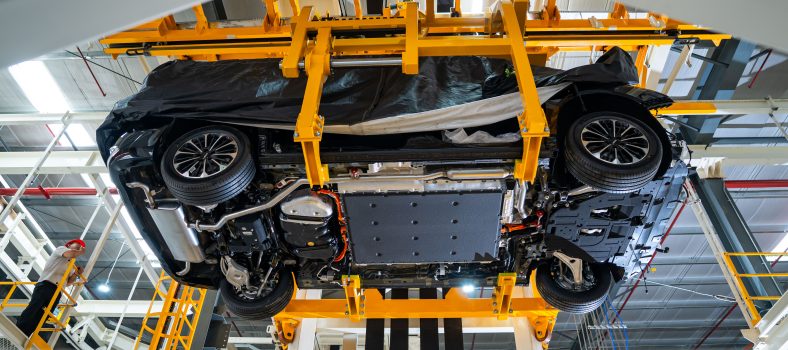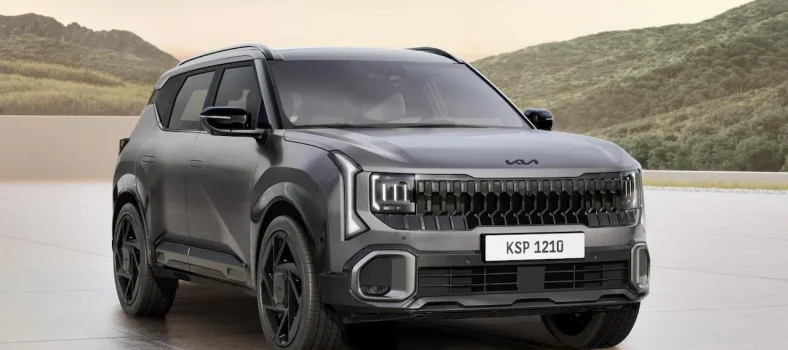Lebih Daripada 10 Juta Toyota RAV4 Telah Dijual Sejak 1994
Toyota telah berjaya menjual RAV4 ke 10 juta, yang mengagumkan lebih-lebih lagi dalam masa hanya 26 tahun. Menjadi pembuat kenderaan terbesar di dunia, Toyota tidak asing dengan tonggak penjualan besar dengan banyak model arus perdana mereka.

SUV Toyota lain yang sangat baik seperti Land Cruiser juga telah mencapai 10 juta penjualan terkumpul sepanjang pengeluaran tetapi mengambil masa hampir 70 tahun untuk mencapai angka tersebut. Diakui, RAV4 mempunyai daya tarikan arus perdana yang lebih luas, memandangkan ia adalah soft-roader dengan harga yang rendah, ukuran praktikal dan sesaran enjin yang lebih kecil.

Kini, pasaran Amerika Utara adalah pasaran tunggal terbesar RAV4 dengan 965,760 unit yang dijual di sana pada tahun 2019 sahaja. Eropah menduduki tempat ke-2 dengan 133,000 unit dan China yang ke-3 dengan 127,000 unit dijual.

Terdapat khabar angin kuat yang menunjukkan bahawa Toyota RAV4 generasi sekarang mungkin akan kembali ke pasaran Malaysia. RAV4 generasi 1 dan 2 telah dijual secara rasmi oleh UMW Toyota tetapi model-model berikutnya hanya ditawarkan oleh pengimport selari.

Siaran Media
When the first generation RAV4 was revealed at the Geneva Motor Show in March 1994, few could have anticipated how this bold new concept in motoring would reshape the automotive marketplace. As well as pioneering a new type of vehicle, it would embrace new technologies and create a whole new market for compact, agile and versatile SUVs ideally suited to modern life.
The RAV4 was an original, heralding a new era for 4x4s and the response was immediately positive. From the outset, it was a global model: sales started in Japan in May 1994, followed by Europe, Africa, Australia and Latin America the following month. Its North American debut came in January 1996.
Initial production estimates were for 4,500 sales a month, but when 8.000 orders were taken in the first month alone, production volumes were doubled. RAV4 paved the way for a whole new SUV segment that has not stopped growing since: more than a quarter of a century on from its debut, RAV4 was the world’s best-selling SUV in 2018 and 2019, and in 2019 was the fourth best-selling passenger car overall. Toyota’s policy of constant improvement in line with the changing tastes and demands of motorists has ensured the RAV4 continues to set standards for quality, performance and practicality.
The beginning
The ideas behind the RAV4 (Recreational Active Vehicle with 4-wheel drive) were first expressed in the RAV-FOUR concept car at the 1989 Tokyo Motor Show, indicating Toyota’s interest in creating a compact all-wheel drive model. This was just a design study, with none of the detail required for an actual development model, but it gained an enthusiastic welcome from the public. In 1991, the project was given the green light and development work began.
New concept, new challenges
The Chief Engineer for the RAV4 project, Masakatsu Nonaka, found that it wasn’t easy to convince other Toyota departments that a new mass-production car should be created to be sold in a market segment that didn’t yet exist. The term “Sports Utility Vehicle” was still unknown and there were many within Toyota who simply couldn’t grasp the concept of such a compact 4×4. In fact, internal resistance even stalled the project at one point, but support from an unexpected quarter gave it new life.
Toyota’s Japanese and European sales divisions, being in close contact with market, believed the time was right for this type of car. Together they put the project back on track, and they were proven right: very soon after the RAV4’s launch it was being widely acclaimed as a new trendsetter.
From niche model to global car
The compact SUV market that Toyota created quickly flourished. Toyota sold around 53,000 RAV4 in 1994, doubling, then tripling the total in the next two years. Sales continued to grow with each successive generation, even as almost every competitor manufacturer brought their own models to the market. In 2019, global RAV4 sales were more than 17 times the total achieved in the model’s first year.
This enduring success owes much to Toyota’s constant improvement of the product. With each new generation, it has listened to the comments of motorists and adapted the vehicle’s size, functionality, performance and styling to meet the market’s changing preferences and requirements.
For example, the third generation saw the spare wheel moved from its position on the back door, giving the car a more sophisticated appearance. And with the fourth generation, the wheelbase was standardised worldwide. The three-door model had been discontinued earlier so that now RAV4 was exclusively a five-door vehicle and more spacious than ever before.
Technical excellence
Toyota also kept RAV4 technically advanced, introducing new vehicle platforms and developing intelligent all-wheel drive systems that combined better handling with more efficient performance, both on-road and off. Even during the lifetime of the first generation model, Toyota recognised that all-wheel drive was not a requirement for all customers and so expanded the model’s appeal with the option of two/front-wheel drive.
Where powertrains were concerned, the choice was tailored to suit the demands of different world markets, including both gasoline and diesel units, up to 3.5-litre capacity. Again, the focus was on efficiency and performance appropriate to the vehicle’s role as an urban SUV, equipped to accommodate families, or as an ideal partner for people who enjoy active lifestyles.
The first hybrid
In 2016, Toyota presented the first RAV4 Hybrid, a vehicle that preserved all the qualities of the fourth generation model but added the benefits of a full hybrid electric powertrain. As the first full hybrid in its segment in Europe, it strengthened the appeal of the RAV4 with class-leading fuel economy and emissions, and smooth powerful performance – including a highly efficient electric all-wheel drive system.
The RAV4 today
The current, fifth generation RAV4 was launched in Europe in 2019 – principally as a hybrid in western European markets. It is the first SUV to be built on Toyota’s GA-K modular platform, which, with a low centre of gravity and significantly greater body rigidity, contributes to superior handling, ride comfort, a spacious interior and class-leading load space. The new platform also gave the design team more freedom to create an eye-catching design with lower roof and hood lines.
The hybrid system features a new 2.5-litre petrol hybrid Dynamic Force engine, offering 218 DIN hp in front-wheel drive form and 222 DIN hp with all-wheel drive, delivering step-changes in power, responsiveness and class-leading efficiency.
The RAV4’s intelligent all-wheel drive system (AWD-i) has been comprehensively improved to achieve a “drive on any road” capability, with much stronger performance in challenging conditions and secure handling on slippery surfaces.
The next chapter- the RAV4 Plug-in Hybrid
Building on RAV4’s success as a pioneer of hybrid power among SUVs, Toyota will extend the benefits of the technology with the introduction of the new RAV4 Plug-in Hybrid during the second half of 2020. This will be a new flagship vehicle for its hybrid line-up that promises to be not only more powerful but also more emissions and fuel-efficient than any other in its class.
The RAV4 Plug-in Hybrid will offer customers a best-of-both-worlds solution. It features Toyota’s latest hybrid-electric vehicle technology, with higher power and better driving dynamics, and also has a genuine pure electric EV driving capability, free from concerns about driving range or the need to stop to recharge the battery.
Toyota has harnessed the boost in performance electric power can deliver to achieve a significant increase in output compared to the standard RAV4 Hybrid, deploying a new, high-capacity lithium-ion battery and adding an enhanced boost converter to the hybrid system’s power control unit. The 2.5-litre Hybrid Dynamic Force petrol engine is based on the unit featured in the regular RAV4 Hybrid, with improvements to meet the performance requirements of the plug-in hybrid system.
With full system output of 306 DIN hp/225 kW*, it has the potential to deliver acceleration from rest to 100 km/h in around just six seconds*, while Toyota’s pre-homologation, WLTP-standard data indicates class-leading low CO2output.
The RAV4 Plug-in Hybrid will also have a greater driving range in electric EV mode, with zero fuel consumption and exhaust emissions. The driver will be able to switch seamlessly from hybrid to pure EV driving, with the potential to cover greater distances than any competitor plug-in hybrid SUV on electric power (battery charge and driving conditions permitting), well beyond the 50 km average European daily commuting distance. Moreover, speeds up to 135 km/h can be reached without any intervention from the internal combustion engine, even under full acceleration.






No Comment